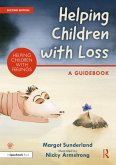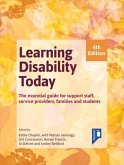Lonnie R. Helton, Mieko Kotake Smith
Mental Health Practice with Children and Youth
A Strengths and Well-Being Model
Lonnie R. Helton, Mieko Kotake Smith
Mental Health Practice with Children and Youth
A Strengths and Well-Being Model
- Broschiertes Buch
- Merkliste
- Auf die Merkliste
- Bewerten Bewerten
- Teilen
- Produkt teilen
- Produkterinnerung
- Produkterinnerung
Mental Health Practice with Children and Youth shows how children's rights have slowly evolved over many years, from children's status as property in the 1600s to the twentieth-century innovations that give a child a specific legal status with a certain amount of freedom and self-determination.
Andere Kunden interessierten sich auch für
![Mental Health Nursing Mental Health Nursing]() Mental Health Nursing165,99 €
Mental Health Nursing165,99 €![Activism and LGBT Psychology Activism and LGBT Psychology]() Activism and LGBT Psychology74,99 €
Activism and LGBT Psychology74,99 €![Bedlam Bedlam]() Catharine ArnoldBedlam14,99 €
Catharine ArnoldBedlam14,99 €![Sad Janet Sad Janet]() Lucie BritschSad Janet12,99 €
Lucie BritschSad Janet12,99 €![Helping Children with Loss Helping Children with Loss]() Margot SunderlandHelping Children with Loss38,99 €
Margot SunderlandHelping Children with Loss38,99 €![Sad Janet Sad Janet]() Lucie BritschSad Janet20,99 €
Lucie BritschSad Janet20,99 €![Learning Disability Today fourth edition Learning Disability Today fourth edition]() Learning Disability Today fourth edition30,99 €
Learning Disability Today fourth edition30,99 €-
-
-
Mental Health Practice with Children and Youth shows how children's rights have slowly evolved over many years, from children's status as property in the 1600s to the twentieth-century innovations that give a child a specific legal status with a certain amount of freedom and self-determination.
Hinweis: Dieser Artikel kann nur an eine deutsche Lieferadresse ausgeliefert werden.
Hinweis: Dieser Artikel kann nur an eine deutsche Lieferadresse ausgeliefert werden.
Produktdetails
- Produktdetails
- Verlag: Taylor & Francis Inc
- Seitenzahl: 268
- Erscheinungstermin: 11. August 2004
- Englisch
- Abmessung: 212mm x 165mm x 17mm
- Gewicht: 376g
- ISBN-13: 9780789015754
- ISBN-10: 0789015757
- Artikelnr.: 21855999
- Herstellerkennzeichnung
- Libri GmbH
- Europaallee 1
- 36244 Bad Hersfeld
- gpsr@libri.de
- Verlag: Taylor & Francis Inc
- Seitenzahl: 268
- Erscheinungstermin: 11. August 2004
- Englisch
- Abmessung: 212mm x 165mm x 17mm
- Gewicht: 376g
- ISBN-13: 9780789015754
- ISBN-10: 0789015757
- Artikelnr.: 21855999
- Herstellerkennzeichnung
- Libri GmbH
- Europaallee 1
- 36244 Bad Hersfeld
- gpsr@libri.de
Helton, Lonnie R.; Smith, Mieko Kotake
* Acknowledgments
* Chapter 1. The Strengths and Resilience of Children
* The Strengths Perspective
* The Strengths of Children
* Defining Resiliency
* Development of Resiliency
* Conceptual Model of Resiliency
* Person-Environmental Transaction for the Development of Resiliency
* Conclusion
* Strengths Story: Henry Lester
* Questions for Discussion
* Chapter 2. The Care of Children in American Society: Historical
Events and Trends
* Early Perceptions and Treatment of Children
* Nineteenth-Century Efforts for Change
* Twentieth-Century Innovations
* Child Welfare Practice
* Conclusion
* Strengths Story: Cynthia Harper
* Questions for Discussion
* Chapter 3. Children and Family Relationships
* Children in Biological Families
* Children in Single-Parent Families
* Children in Blended Families
* Children in Gay and Lesbian Families
* Children in Multigenerational Families
* Children in Foster Families
* Children in Adoptive Families
* Children in Residential Settings
* Conclusion
* Strengths Story: Joanna Brown
* Questions for Discussion
* Chapter 4. Child Socialization and Peer Relationships
* Family Influences on Socialization
* School and Peer Relationships
* Children in the Community
* Conclusion
* Strengths Story: Billy Lapahie
* Questions for Discussion
* Chapter 5. Children and Learning
* Teacher Expectations and Learning
* Elements of Learning and Achievement
* Ethnic and Culturally Different Children
* Children and Special Education
* Home Schooling: An Educational Alternative
* Conclusion
* Strengths Story: Hannah Carter
* Questions for Discussion
* Chapter 6. Self-Concept and Self-Esteem
* Self-Esteem and Well-Being
* A Case Scenario of Resilience
* Conclusion
* Strengths Story: Michiko Tanaka
* Questions for Discussion
* Chapter 7. Adolescence
* Adolescent Ethnic and Racial Identity
* Gender Roles
* Adolescents and Sexual Orientation
* Transitions to Adulthood
* Conclusion
* Strengths Story: Zor Hollis
* Questions for Discussion
* Chapter 8. Child-Centered Practice Approaches: Emphasis on Strength
and Resilience
* Guidelines for Interviewing and Assessing Children
* Guidelines for Interviewing and Assessing Adolescents
* Practice with Children in Child Welfare
* School Social Work and Counseling in School
* Mental Health Services for Children and Adolescents
* Conclusion
* Strengths Story: Ina Abrams
* Questions for Discussion
* Chapter 9. Media-Directed, Creative Child Therapies
* Play Therapy
* Drawing and Art Therapy
* Puppet Therapy
* Clown Therapy
* Bibliotherapy
* Music Therapy
* Collaboration with Parents
* Conclusion
* Strengths Story: Helen McGuire
* Questions for Discussion
* Chapter 10. Evidence-Based Practice and Research for Promoting
Children's Strengths
* Introduction
* Resilience-Based Programs
* Conclusion
* Strengths Story: Charles Elliott Maples
* Questions for Discussion
* Chapter 11. Empowerment of Children in the Global Arena
* United Nations Convention on the Rights of the Child
* International Adoptions
* A Case Scenario of International Adoption
* Conclusion
* Strengths Story: Antun (Tony) Boskovich
* Questions for Discussion
* Epilogue
* Index
* Reference Notes Included
* Chapter 1. The Strengths and Resilience of Children
* The Strengths Perspective
* The Strengths of Children
* Defining Resiliency
* Development of Resiliency
* Conceptual Model of Resiliency
* Person-Environmental Transaction for the Development of Resiliency
* Conclusion
* Strengths Story: Henry Lester
* Questions for Discussion
* Chapter 2. The Care of Children in American Society: Historical
Events and Trends
* Early Perceptions and Treatment of Children
* Nineteenth-Century Efforts for Change
* Twentieth-Century Innovations
* Child Welfare Practice
* Conclusion
* Strengths Story: Cynthia Harper
* Questions for Discussion
* Chapter 3. Children and Family Relationships
* Children in Biological Families
* Children in Single-Parent Families
* Children in Blended Families
* Children in Gay and Lesbian Families
* Children in Multigenerational Families
* Children in Foster Families
* Children in Adoptive Families
* Children in Residential Settings
* Conclusion
* Strengths Story: Joanna Brown
* Questions for Discussion
* Chapter 4. Child Socialization and Peer Relationships
* Family Influences on Socialization
* School and Peer Relationships
* Children in the Community
* Conclusion
* Strengths Story: Billy Lapahie
* Questions for Discussion
* Chapter 5. Children and Learning
* Teacher Expectations and Learning
* Elements of Learning and Achievement
* Ethnic and Culturally Different Children
* Children and Special Education
* Home Schooling: An Educational Alternative
* Conclusion
* Strengths Story: Hannah Carter
* Questions for Discussion
* Chapter 6. Self-Concept and Self-Esteem
* Self-Esteem and Well-Being
* A Case Scenario of Resilience
* Conclusion
* Strengths Story: Michiko Tanaka
* Questions for Discussion
* Chapter 7. Adolescence
* Adolescent Ethnic and Racial Identity
* Gender Roles
* Adolescents and Sexual Orientation
* Transitions to Adulthood
* Conclusion
* Strengths Story: Zor Hollis
* Questions for Discussion
* Chapter 8. Child-Centered Practice Approaches: Emphasis on Strength
and Resilience
* Guidelines for Interviewing and Assessing Children
* Guidelines for Interviewing and Assessing Adolescents
* Practice with Children in Child Welfare
* School Social Work and Counseling in School
* Mental Health Services for Children and Adolescents
* Conclusion
* Strengths Story: Ina Abrams
* Questions for Discussion
* Chapter 9. Media-Directed, Creative Child Therapies
* Play Therapy
* Drawing and Art Therapy
* Puppet Therapy
* Clown Therapy
* Bibliotherapy
* Music Therapy
* Collaboration with Parents
* Conclusion
* Strengths Story: Helen McGuire
* Questions for Discussion
* Chapter 10. Evidence-Based Practice and Research for Promoting
Children's Strengths
* Introduction
* Resilience-Based Programs
* Conclusion
* Strengths Story: Charles Elliott Maples
* Questions for Discussion
* Chapter 11. Empowerment of Children in the Global Arena
* United Nations Convention on the Rights of the Child
* International Adoptions
* A Case Scenario of International Adoption
* Conclusion
* Strengths Story: Antun (Tony) Boskovich
* Questions for Discussion
* Epilogue
* Index
* Reference Notes Included
* Acknowledgments
* Chapter 1. The Strengths and Resilience of Children
* The Strengths Perspective
* The Strengths of Children
* Defining Resiliency
* Development of Resiliency
* Conceptual Model of Resiliency
* Person-Environmental Transaction for the Development of Resiliency
* Conclusion
* Strengths Story: Henry Lester
* Questions for Discussion
* Chapter 2. The Care of Children in American Society: Historical
Events and Trends
* Early Perceptions and Treatment of Children
* Nineteenth-Century Efforts for Change
* Twentieth-Century Innovations
* Child Welfare Practice
* Conclusion
* Strengths Story: Cynthia Harper
* Questions for Discussion
* Chapter 3. Children and Family Relationships
* Children in Biological Families
* Children in Single-Parent Families
* Children in Blended Families
* Children in Gay and Lesbian Families
* Children in Multigenerational Families
* Children in Foster Families
* Children in Adoptive Families
* Children in Residential Settings
* Conclusion
* Strengths Story: Joanna Brown
* Questions for Discussion
* Chapter 4. Child Socialization and Peer Relationships
* Family Influences on Socialization
* School and Peer Relationships
* Children in the Community
* Conclusion
* Strengths Story: Billy Lapahie
* Questions for Discussion
* Chapter 5. Children and Learning
* Teacher Expectations and Learning
* Elements of Learning and Achievement
* Ethnic and Culturally Different Children
* Children and Special Education
* Home Schooling: An Educational Alternative
* Conclusion
* Strengths Story: Hannah Carter
* Questions for Discussion
* Chapter 6. Self-Concept and Self-Esteem
* Self-Esteem and Well-Being
* A Case Scenario of Resilience
* Conclusion
* Strengths Story: Michiko Tanaka
* Questions for Discussion
* Chapter 7. Adolescence
* Adolescent Ethnic and Racial Identity
* Gender Roles
* Adolescents and Sexual Orientation
* Transitions to Adulthood
* Conclusion
* Strengths Story: Zor Hollis
* Questions for Discussion
* Chapter 8. Child-Centered Practice Approaches: Emphasis on Strength
and Resilience
* Guidelines for Interviewing and Assessing Children
* Guidelines for Interviewing and Assessing Adolescents
* Practice with Children in Child Welfare
* School Social Work and Counseling in School
* Mental Health Services for Children and Adolescents
* Conclusion
* Strengths Story: Ina Abrams
* Questions for Discussion
* Chapter 9. Media-Directed, Creative Child Therapies
* Play Therapy
* Drawing and Art Therapy
* Puppet Therapy
* Clown Therapy
* Bibliotherapy
* Music Therapy
* Collaboration with Parents
* Conclusion
* Strengths Story: Helen McGuire
* Questions for Discussion
* Chapter 10. Evidence-Based Practice and Research for Promoting
Children's Strengths
* Introduction
* Resilience-Based Programs
* Conclusion
* Strengths Story: Charles Elliott Maples
* Questions for Discussion
* Chapter 11. Empowerment of Children in the Global Arena
* United Nations Convention on the Rights of the Child
* International Adoptions
* A Case Scenario of International Adoption
* Conclusion
* Strengths Story: Antun (Tony) Boskovich
* Questions for Discussion
* Epilogue
* Index
* Reference Notes Included
* Chapter 1. The Strengths and Resilience of Children
* The Strengths Perspective
* The Strengths of Children
* Defining Resiliency
* Development of Resiliency
* Conceptual Model of Resiliency
* Person-Environmental Transaction for the Development of Resiliency
* Conclusion
* Strengths Story: Henry Lester
* Questions for Discussion
* Chapter 2. The Care of Children in American Society: Historical
Events and Trends
* Early Perceptions and Treatment of Children
* Nineteenth-Century Efforts for Change
* Twentieth-Century Innovations
* Child Welfare Practice
* Conclusion
* Strengths Story: Cynthia Harper
* Questions for Discussion
* Chapter 3. Children and Family Relationships
* Children in Biological Families
* Children in Single-Parent Families
* Children in Blended Families
* Children in Gay and Lesbian Families
* Children in Multigenerational Families
* Children in Foster Families
* Children in Adoptive Families
* Children in Residential Settings
* Conclusion
* Strengths Story: Joanna Brown
* Questions for Discussion
* Chapter 4. Child Socialization and Peer Relationships
* Family Influences on Socialization
* School and Peer Relationships
* Children in the Community
* Conclusion
* Strengths Story: Billy Lapahie
* Questions for Discussion
* Chapter 5. Children and Learning
* Teacher Expectations and Learning
* Elements of Learning and Achievement
* Ethnic and Culturally Different Children
* Children and Special Education
* Home Schooling: An Educational Alternative
* Conclusion
* Strengths Story: Hannah Carter
* Questions for Discussion
* Chapter 6. Self-Concept and Self-Esteem
* Self-Esteem and Well-Being
* A Case Scenario of Resilience
* Conclusion
* Strengths Story: Michiko Tanaka
* Questions for Discussion
* Chapter 7. Adolescence
* Adolescent Ethnic and Racial Identity
* Gender Roles
* Adolescents and Sexual Orientation
* Transitions to Adulthood
* Conclusion
* Strengths Story: Zor Hollis
* Questions for Discussion
* Chapter 8. Child-Centered Practice Approaches: Emphasis on Strength
and Resilience
* Guidelines for Interviewing and Assessing Children
* Guidelines for Interviewing and Assessing Adolescents
* Practice with Children in Child Welfare
* School Social Work and Counseling in School
* Mental Health Services for Children and Adolescents
* Conclusion
* Strengths Story: Ina Abrams
* Questions for Discussion
* Chapter 9. Media-Directed, Creative Child Therapies
* Play Therapy
* Drawing and Art Therapy
* Puppet Therapy
* Clown Therapy
* Bibliotherapy
* Music Therapy
* Collaboration with Parents
* Conclusion
* Strengths Story: Helen McGuire
* Questions for Discussion
* Chapter 10. Evidence-Based Practice and Research for Promoting
Children's Strengths
* Introduction
* Resilience-Based Programs
* Conclusion
* Strengths Story: Charles Elliott Maples
* Questions for Discussion
* Chapter 11. Empowerment of Children in the Global Arena
* United Nations Convention on the Rights of the Child
* International Adoptions
* A Case Scenario of International Adoption
* Conclusion
* Strengths Story: Antun (Tony) Boskovich
* Questions for Discussion
* Epilogue
* Index
* Reference Notes Included








